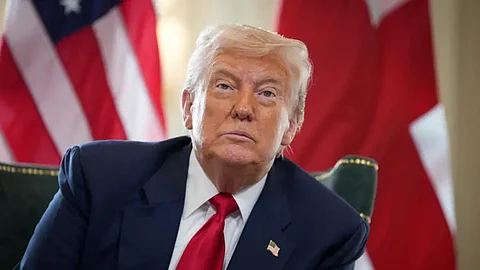

US President Donald Trump has signed a sweeping executive order imposing new tariff rates on goods from 92 countries, significantly reshaping the United States’ global trade relationships just ahead of a Friday implementation deadline.
The revised tariff schedule, which marks the most extensive use of trade penalties under Trump’s presidency, sets a “universal” 10 percent tariff on imports from most countries, while applying sharply higher duties on select nations.
According to the White House, goods from all nations will be subject to a baseline 10 percent import tax, unless specified otherwise in an annex listing 92 countries facing higher rates. The highest tariff—41 percent—has been imposed on goods from Syria. Meanwhile, Canada, one of the US’s largest trading partners, will face a 35 percent tariff on many goods.
The new order follows Trump’s earlier tariff announcement in April and coincides with heightened legal scrutiny over his use of the 1977 International Emergency Economic Powers Act (IEEPA) to justify the moves. On Thursday, a US federal appeals court heard arguments on whether Trump had overstepped his authority in imposing such broad trade measures.
India, a close strategic partner, saw a modest reduction in its tariff rate from 26 percent in April to 25 percent. However, ongoing trade tensions remain unresolved, particularly over New Delhi’s reluctance to open up its agriculture sector and its continued purchases of Russian oil. Trump has threatened further penalties, including unspecified punitive tariffs.
Brazil, on the other hand, faces one of the steepest penalties. Its overall tariff stands at 50 percent—up from the April rate—following Trump’s anger over the prosecution of former Brazilian president Jair Bolsonaro, a close ally. Although the new tariffs exclude key Brazilian exports such as aircraft, energy products, orange juice, wood pulp and metals, Brazilian coffee is subject to the full duty.
The United Kingdom and the Falkland Islands will face the standard 10 percent tariff.
Other major trading partners faced varied revisions:
Taiwan: 20 percent (down from 32 percent)
Japan: 15 percent (down from 24 percent)
South Korea: 15 percent (down from 25 percent)
Switzerland: 39 percent (up from 31 percent)
Vietnam: 20 percent (down from 46 percent)
Indonesia: 19 percent (down from 32 percent)
Bangladesh: 20 percent (down from 37 percent)
Cambodia: 19 percent (down from 49 percent)
Laos: 40 percent (down from 48 percent)
Sri Lanka: 20 percent (down from 44 percent)
Thailand: 19 percent (down from 36 percent)
Lesotho: 15 percent (down from 50 percent)
Serbia: 35 percent (down from 37 percent)
Israel: 15 percent (down from 17 percent)
In a move that raised eyebrows, tariffs on the Philippines were increased from 17 percent to 19 percent, despite its president, Bongbong Marcos, having recently concluded a friendly visit to the White House.
South Africa, whose president publicly rejected Trump’s claims about alleged persecution of the white population, retained its earlier tariff rate of 30 percent.
Canada’s tariff hike contrasted with Trump’s decision to grant Mexico a 90-day reprieve from a proposed 30 percent tariff hike. According to the White House, the delay aims to allow more time for a broader trade pact to be finalised. Mexico is currently shielded from many tariffs under the United States-Mexico-Canada Agreement (USMCA), with nearly 85 percent of its exports to the US considered compliant.
However, Mexico will continue to face 50 percent tariffs on steel, aluminium and copper, and 25 percent duties on automotive goods that do not meet USMCA rules of origin. Trump also announced that Mexico had agreed to dismantle a range of non-tariff barriers, though no specifics were provided.
Meanwhile, judges on the US Court of Appeals for the Federal Circuit appeared sceptical during oral arguments on Trump’s use of IEEPA to declare emergencies—on trade deficits and the fentanyl crisis—as justification for sweeping tariffs.
Trump has framed the latest tariffs as “reciprocal” measures aimed at restoring fairness in trade and national security, but critics argue the moves are politically driven and legally dubious. His administration has also hinted at more deals to come, particularly with China, which faces an August 12 deadline to reach a final agreement or risk further penalties.